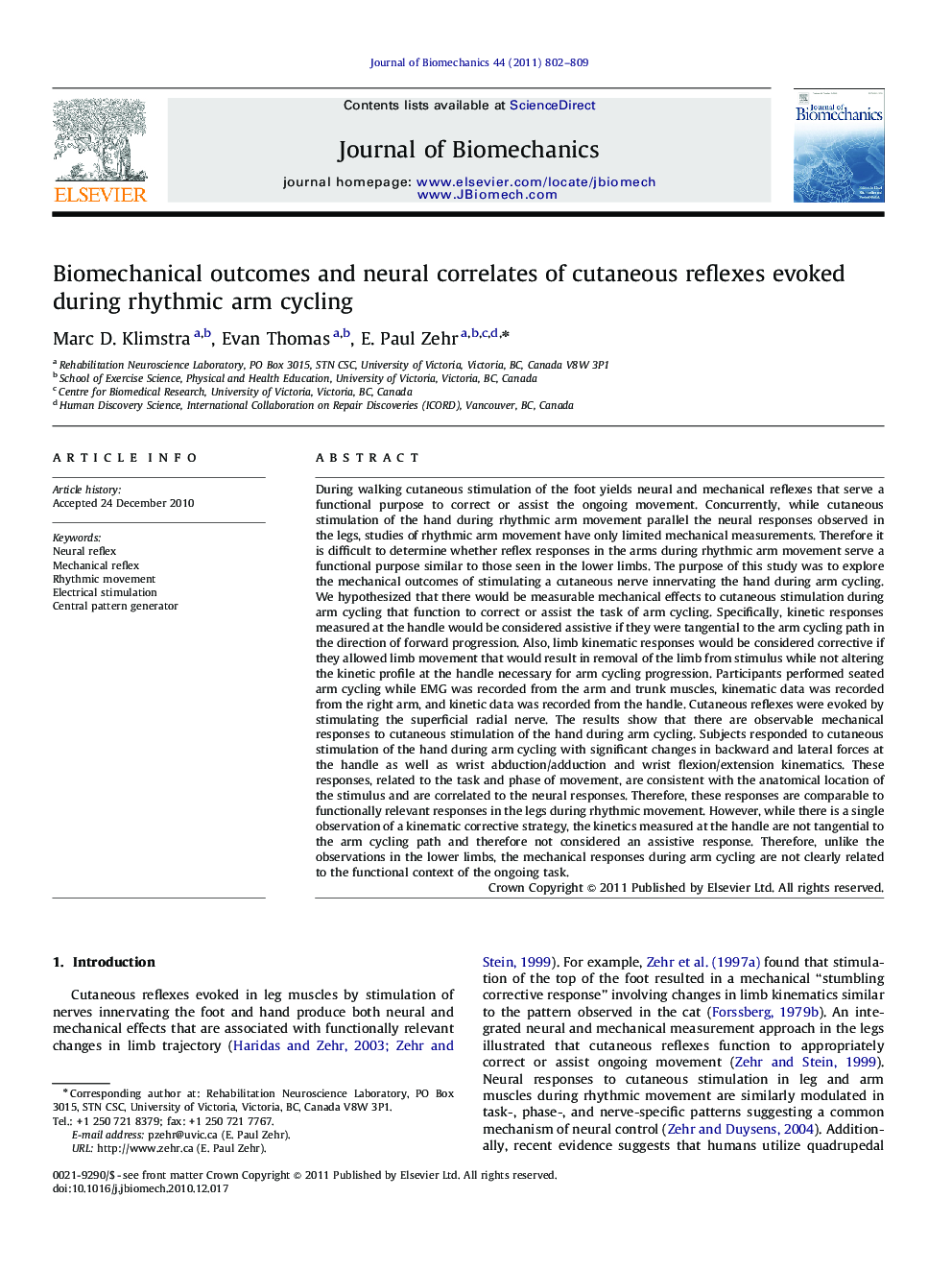| کد مقاله | کد نشریه | سال انتشار | مقاله انگلیسی | نسخه تمام متن |
|---|---|---|---|---|
| 10432830 | 910261 | 2011 | 8 صفحه PDF | دانلود رایگان |
عنوان انگلیسی مقاله ISI
Biomechanical outcomes and neural correlates of cutaneous reflexes evoked during rhythmic arm cycling
دانلود مقاله + سفارش ترجمه
دانلود مقاله ISI انگلیسی
رایگان برای ایرانیان
کلمات کلیدی
موضوعات مرتبط
مهندسی و علوم پایه
سایر رشته های مهندسی
مهندسی پزشکی
پیش نمایش صفحه اول مقاله

چکیده انگلیسی
During walking cutaneous stimulation of the foot yields neural and mechanical reflexes that serve a functional purpose to correct or assist the ongoing movement. Concurrently, while cutaneous stimulation of the hand during rhythmic arm movement parallel the neural responses observed in the legs, studies of rhythmic arm movement have only limited mechanical measurements. Therefore it is difficult to determine whether reflex responses in the arms during rhythmic arm movement serve a functional purpose similar to those seen in the lower limbs. The purpose of this study was to explore the mechanical outcomes of stimulating a cutaneous nerve innervating the hand during arm cycling. We hypothesized that there would be measurable mechanical effects to cutaneous stimulation during arm cycling that function to correct or assist the task of arm cycling. Specifically, kinetic responses measured at the handle would be considered assistive if they were tangential to the arm cycling path in the direction of forward progression. Also, limb kinematic responses would be considered corrective if they allowed limb movement that would result in removal of the limb from stimulus while not altering the kinetic profile at the handle necessary for arm cycling progression. Participants performed seated arm cycling while EMG was recorded from the arm and trunk muscles, kinematic data was recorded from the right arm, and kinetic data was recorded from the handle. Cutaneous reflexes were evoked by stimulating the superficial radial nerve. The results show that there are observable mechanical responses to cutaneous stimulation of the hand during arm cycling. Subjects responded to cutaneous stimulation of the hand during arm cycling with significant changes in backward and lateral forces at the handle as well as wrist abduction/adduction and wrist flexion/extension kinematics. These responses, related to the task and phase of movement, are consistent with the anatomical location of the stimulus and are correlated to the neural responses. Therefore, these responses are comparable to functionally relevant responses in the legs during rhythmic movement. However, while there is a single observation of a kinematic corrective strategy, the kinetics measured at the handle are not tangential to the arm cycling path and therefore not considered an assistive response. Therefore, unlike the observations in the lower limbs, the mechanical responses during arm cycling are not clearly related to the functional context of the ongoing task.
ناشر
Database: Elsevier - ScienceDirect (ساینس دایرکت)
Journal: Journal of Biomechanics - Volume 44, Issue 5, 15 March 2011, Pages 802-809
Journal: Journal of Biomechanics - Volume 44, Issue 5, 15 March 2011, Pages 802-809
نویسندگان
Marc D. Klimstra, Evan Thomas, E. Paul Zehr,